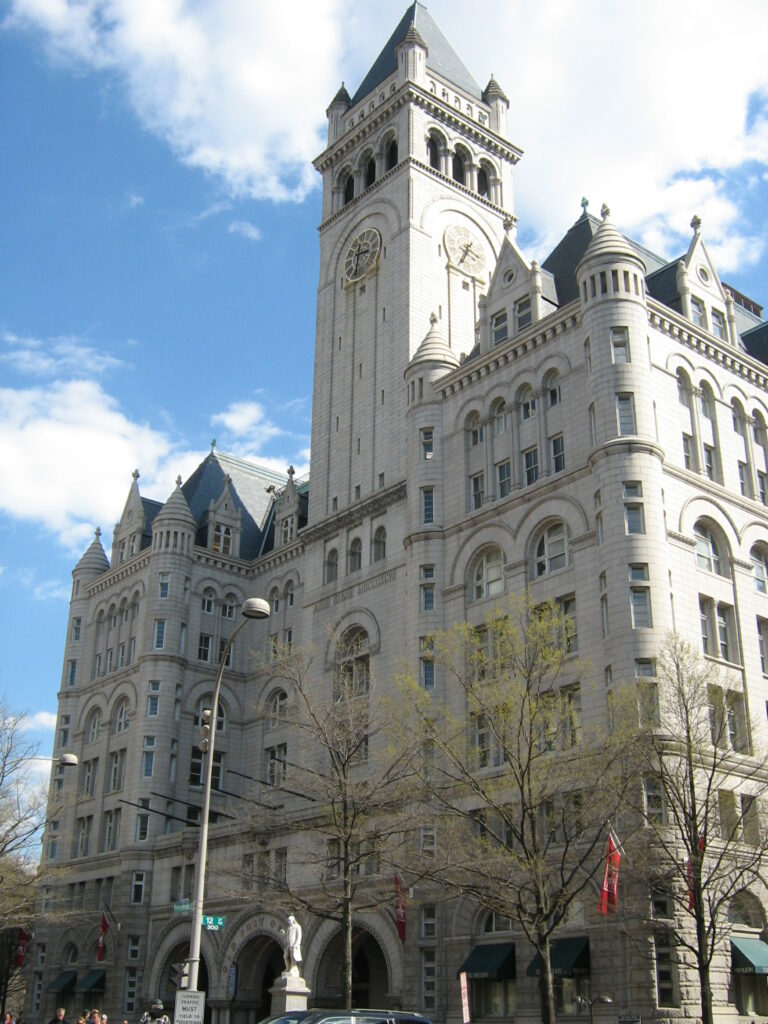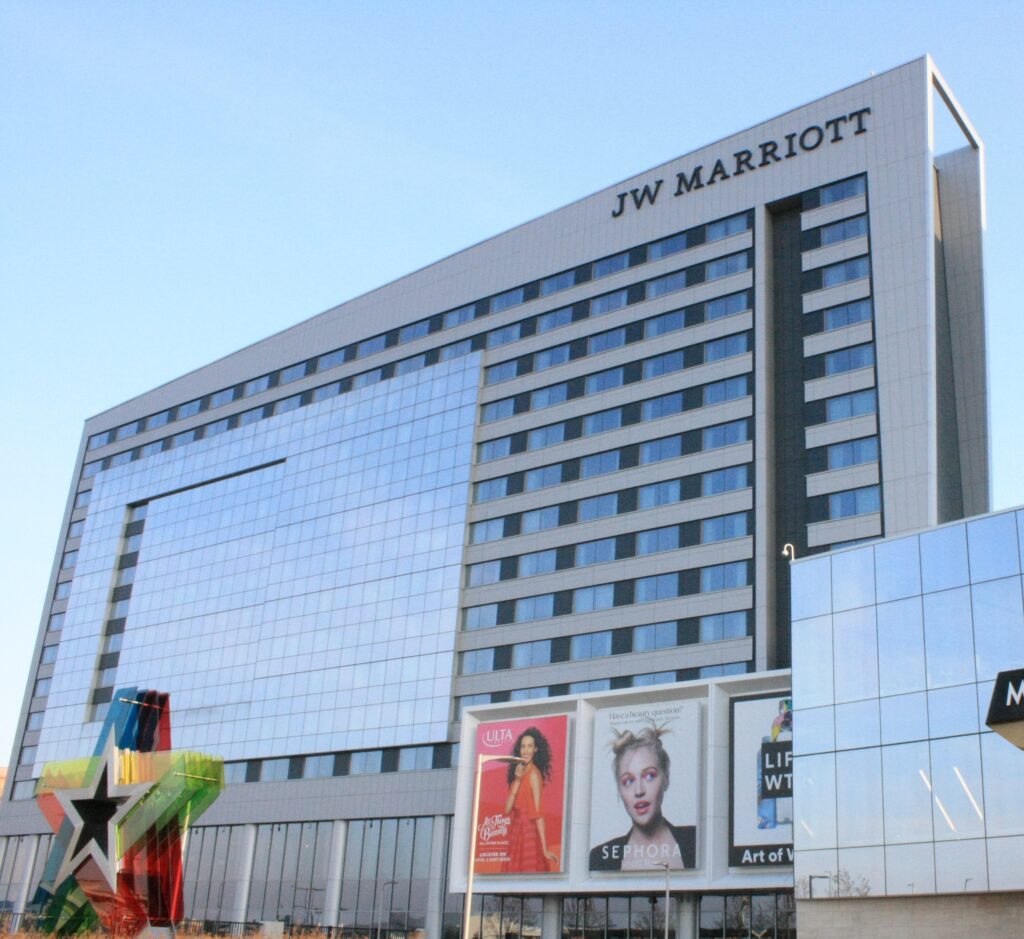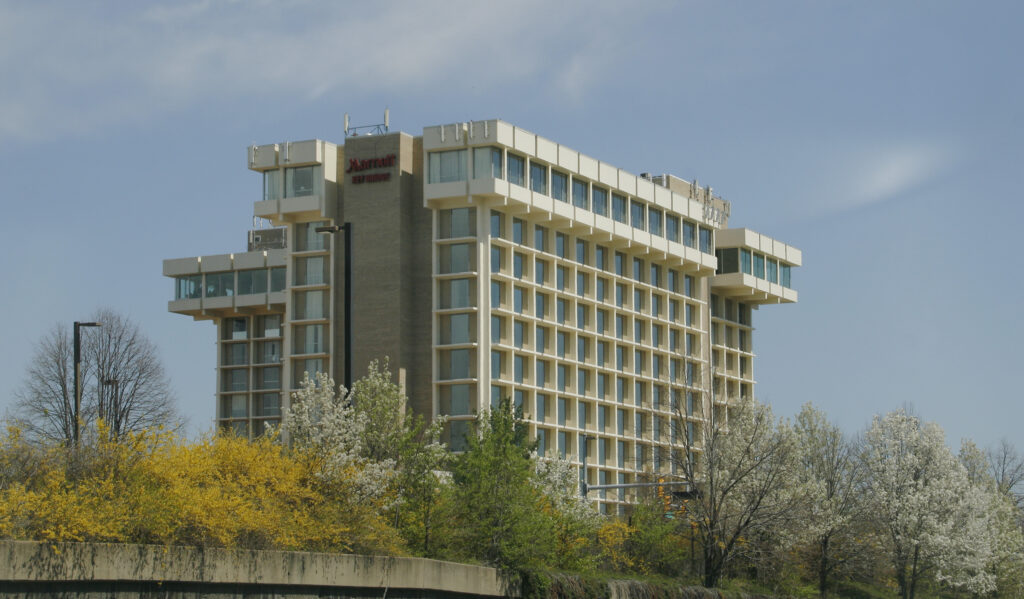The Hotel Industry in the Post-COVID Age
 The Old Post Office Pavilion in Downtown, now home to the Waldorf Astoria Washington DC
The Old Post Office Pavilion in Downtown, now home to the Waldorf Astoria Washington DC
Source: dave_7 (Wikimedia Commons)
The COVID-19 pandemic brought some difficult times to the hospitality industry and has completely altered the way people travel. During this time, traditional hotel stays were being exchanged for vacation rentals, via websites such as Airbnb and Vrbo. This sector of the “sharing economy” picked up a lot of steam during the pandemic as it could offer similar (if not better) accommodations with the added promise of little to no interaction with other people, and sometimes for even less than hotel prices. The availability of such alternative accommodations at accessible pricing, along with the pandemic putting a halt on everyone’s travel plans, helped lead to the plummet in hotel occupancy rates that we experienced in 2020. Hotel revenues were halved during this period as well. In the U.S., hotel demand was down close to 60% early in the pandemic, according to a recent CBRE report. In 2021, leisure travel demand began to slowly return. With recent widespread vaccine distribution and renewed consumer optimism, the industry has begun to reemerge and should continue to recover as we move deeper into 2022.
Two years of being periodically cooped up during the pandemic have many people, especially younger people, eager to get back out there and travel. Many Americans began traveling again in 2021 and we can expect that trend to continue, if not amplify this year. Looking forward to the second half of 2022, there is reason to be positive about the current landscape of the hotel industry. Supply growth has been mediocre, there is currently a renewed, strong demand for leisure travel, international travel is gaining momentum as countries around the world manage their COVID situations and their citizens warm up to traveling abroad again, and an eventual return to in-person work are all factors that bode well for the hotel industry and its recovery. Leisure travel demand is continuing to drive U.S. hotel performance and has helped many cities/markets recover room revenues close to pre-pandemic levels. Areas we still see struggling are business and international travel bookings. Business travelers accounted for more than 50% of the industry’s revenue in 2019. Business travel demand has been hampered by corporate budgets which took a hit during the pandemic. The rollback of international travel restrictions will bring more inbound travel and boost hotels in global hub cities that rely on such demographics. Even with this, business travel will struggle to even reach 80% of its 2019 level this year, according to a CBRE report. It should also be noted that many hotels have been limiting occupancy and amenities to stay open due to the losses experienced during the pandemic. Going forward, hotels will probably work to drive up rates as much as they can rather than focus on occupancy to try and recoup losses quickly.
 JW Marriott hotel in Minnesota
JW Marriott hotel in Minnesota
Source: Tyler Vigen (Wikimedia Commons)
Occupancy and room revenue are both expected to continue their rebound this year as well. A study by STR compared daily room rates in the U.S. in late January/early February 2022 to the same weeks in 2019 and found that the 2022 rates were just 1.2% lower than the pre-pandemic comparison. In 2022, groups such as the American Housing & Lodging Association (AHLA), expect room revenues to return to nearly 1% of what they were in 2019. In 2020 and 2021, occupancy rates in the U.S. were at 44.0% and 57.6%, respectively. The AHLA also predicts occupancy rates to reach 63.4% this year, closing in on the 66.0% level they were at in 2019. As of the week ending April 16th, U.S. hotel occupancy was at 62% (Washington Business Journal), so it does seem like things are trending in the right direction. Average daily rates and revenue per available room are also both up when compared to the same week in April 2019. Some markets are performing better than others. Sunbelt cities, like Phoenix and Tampa, have been performing better than other places in the U.S. due to more relaxed COVID restrictions and their reputation as resort destinations. In terms of employment, hotels finished 2021 with just 77% of their 2019 employment level. A survey done by the AHLA had over 90% of their respondents claim that their hotels are understaffed. The key takeaways from all these statistics are that occupancy rates are continuing to grow in much of the nation and room revenues are being raised sharply.
 Former Key Bridge Marriott hotel in Rosslyn, Arlington, VA
Former Key Bridge Marriott hotel in Rosslyn, Arlington, VA
Source: David (Wikimedia Commons)
As far as what’s ahead, hotel owners will have to analyze how the pandemic has altered the way we think about travel. Consumer behaviors and preferences have shifted greatly during the past two years. People now may also be blending both leisure and business travel as remote work is looking like it is here to stay (at least in part). Travelers will be motivated by different things and may have different priorities. Health and sanitation (chiefly), flexible booking policies, ease of access to services, and sustainable products are all new factors that will be heavily valued by leisure/business travelers going forward. With business travel still on the sidelines, hotels will have to shift their focus to the leisure traveler. Leisure travelers expect more amenities, guided booking processes, and planned events/activities. Hotels could offer transportation to major tourist attractions, and partner with local businesses to plan events around holidays or major festivals. Adding dedicated workspaces or libraries for digital nomads/remote workers may also be a good option. The challenge for hotels this year will be to curate unique experiences that will resonate with and attract guests.
In addition to this, some hurdles for the industry include navigating future COVID-variant outbreaks and inflation. In terms of the future of COVID, hotels must find ways to sustain leisure travel demand even during periods of high cases or new variant outbreaks. On the other hand, inflation will no doubt make the hotel industry feel like it is swimming against the current. Higher utilities, supply, and labor costs are all factors that will make profitability a challenge even with increased room rates. Higher fuel prices may negatively impact interstate or economy hotels in “drive-to leisure” markets.
Recovery in the hotel industry is happening, the challenging part is predicting how long it will take and what the industry will look like after. With optimistic market conditions and a few more hurdles in the near future, we can at least say we expect 2022 to be a year of more stabilization for the hotel industry.
https://www.ahla.com/sites/default/files/AHLA%20SOTI%20Report%202022%201.24.22.pdf
https://www.hotelmanagement.net/own/cbre-forecasts-continued-hotel-recovery-2022
https://www.costar.com/article/1612431957/leisures-longevity-drives-hotel-industry-outlook-in-2022
https://www.ncbi.nlm.nih.gov/pmc/articles/PMC8752289/
https://www.bizjournals.com/washington/news/2022/04/27/hotel-investment-market-strong-start.html